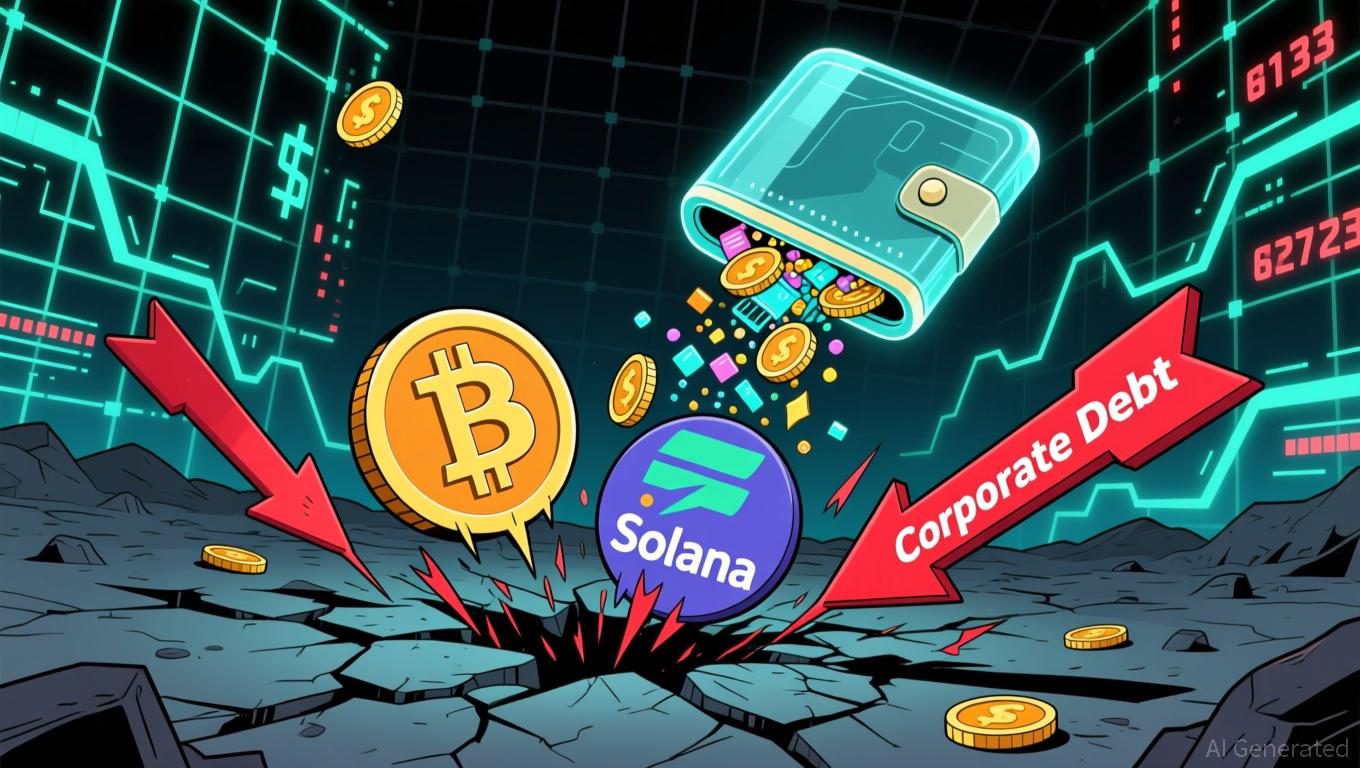Here's How Digital Asset Treasuries are Holding Up as Prices Trend South
The crypto market’s sustained downturn since mid-October has had a deep impact on digital asset treasury stocks and their holdings, with its latest slump triggering nearly $1 billion in liquidations in an hour as Bitcoin dipped below $82,000 Friday morning.
The crypto market decline has had a two-fold impact on digital asset treasuries. The stock price of these major public companies has tanked as sentiment declines. Additionally, the unrealized losses from holding crypto have skyrocketed.
The stock price of Strategy, the company that invented the digital asset treasury playbook, has spiraled over the past year. Still, its crypto hoard is sitting at $7.48 billion in unrealized gains. In a Friday tweet, the firm struck an optimistic note, stating that at current Bitcoin levels, it has “71 years of dividend coverage assuming the price stays flat.”
On prediction market Myriad, owned by Decrypt's parent company Dastan, users place just a 6% chance on Strategy selling any of its Bitcoin holdings before year's end.
Other big names running the DAT playbook have seen their unrealized crypto losses grow considerably over the past month or so.
BitMine Immersion Technologies is a prime example. The entity’s Ethereum holdings are sitting at an unrealized loss of approximately $4.44 billion, according to Bitmine Tracker. Metaplanet and SharpLink are down roughly $682 million and $695 million on their Bitcoin and Ethereum holdings, respectively, according to CoinGecko data. Galaxy Digital and Forward Industries also hold significant paper losses in their diversified crypto portfolios, including Bitcoin, Ethereum, Solana, and Hyperliquid.
The plunging valuations of these DATs have compressed a key financial metric, pushing their market-cap-to-net-asset-value (mNAV) ratios below 1.
BitMine (BMNR) trades at a 0.73x mNAV, while SharpLink and Forward Industries trade at 0.82x and 0.74x, respectively.
“Currently, digital asset treasuries are living in two realities,” Armando Aguilar, head of capital formation at the global Bitcoin yield protocol TeraHash, told Decrypt. “On paper, their holdings’ value has dropped sharply, and their market caps have followed. In practice, most of these companies can still operate because they have enough cash to cover operations. At least for now.”
The critical question is how sustainable this position is if prices continue to fall. When mNAV falls below one, it becomes harder for companies to raise cash by offering equity, increasing the pressure to find other sources of liquidity, experts told Decrypt in a previously published report.
“When a company trades far below the value of the assets it holds, pressure slowly increases,” Aguilar explained. “Investors ask questions about whether the strategy makes sense at all, so raising new capital gets harder.”
“Forced selling is unavoidable only when a firm can no longer fund operations or convince the market to support its long-term plan,” Aguilar said. Although a few DATs are close to that point, the analyst said, he tempered his take by adding that “the group overall hasn’t yet faced an immediate liquidation risk.”
However, if multiple DATs are pushed to sell, the impact would extend beyond their own balance sheets, catalyze “a steady source of downward pressure, not a sudden shock,” on the crypto markets, Aguilar said.
The ultimate recovery for these DATs depends on the resolution of macro uncertainty, experts previously told Decrypt. Such a scenario would catalyze a recovery in risk-on assets, including Bitcoin, potentially improving overall investor sentiment and attracting capital inflows.
Disclaimer: The content of this article solely reflects the author's opinion and does not represent the platform in any capacity. This article is not intended to serve as a reference for making investment decisions.
You may also like
Bitcoin News Update: Innovative Tokenomics and Interoperable Cross-Chain Features: The Key to Altcoin Success in 2025
- 2025 altcoin market highlights Bitcoin Munari (BTCM), XRP Tundra, and Mutuum Finance (MUTM) leveraging multi-chain infrastructure and structured presales. - BTCM's fixed-supply model ($0.35 presale) and Solana-based SPL token deployment aim for 2027 Layer-1 migration with EVM compatibility and privacy features. - XRP Tundra offers cross-chain yield via dual-token system (TUNDRA-S/X) with $0.214 Phase 12 pricing and audited Cryo Vaults for Bitcoin holders. - Mutuum Finance (MUTM) nears 99% Phase 6 allocat

Bitcoin Updates: Institutional Funds Move: AI ETFs Gain Momentum Amid Growing Crypto Debt Issues
- Bitcoin and Solana face renewed selling pressure as digital asset treasury companies (DATCos) offload holdings amid $42.7B corporate debt inflows into crypto. - DATCos, underwater on $126K Bitcoin peak investments, approach parity in market-to-net-asset-value ratios, triggering 40% Solana treasury value declines since October. - Institutional capital shifts toward AI ETFs (e.g., Global X AI ETF) as firms prioritize AI infrastructure investments over crypto, linking performance to tech stock volatility. -

Fed Policy Split Drives Derivatives Activity as Crypto Teeters on Brink of Easing
- Fed policy uncertainty drives derivatives bets, with CME FedWatch pricing 69.7% chance of 25-bp December rate cut amid mixed inflation and labor data. - Crypto markets anticipate easing cycle, but remain fragile as Crypto Fear & Greed Index hits "extreme fear" level 14 despite Coinbase's bearish odds assessment. - Crude oil drops on U.S. Ukraine peace plan and OPEC output hike, while dollar strength compounds risks for rate-cut-sensitive commodities. - CME Group faces scrutiny after $2M insider sale, yet

Modern Monetary Theory and the Valuation of Cryptocurrencies: Do MMT Principles Support Rapid Increases in Token Prices?
- 2025 analysis explores whether Modern Monetary Theory (MMT) can justify Momentum (MMT) token's 1,300% price surge. - Token's rise stems from Binance airdrops, U.S./EU regulatory clarity, and institutional investment, not MMT principles. - Academic research highlights crypto valuation duality: network effects coexist with speculative behavior driven by heterogeneous expectations. - MMT influences macroeconomic frameworks (CBDCs, fiscal policy) but fails to predict token-specific surges dominated by retail
